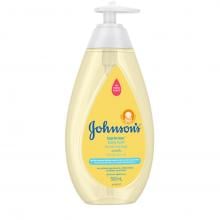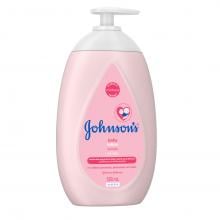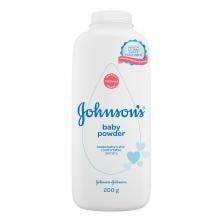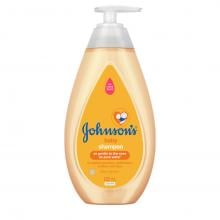How to Bathe Your Baby
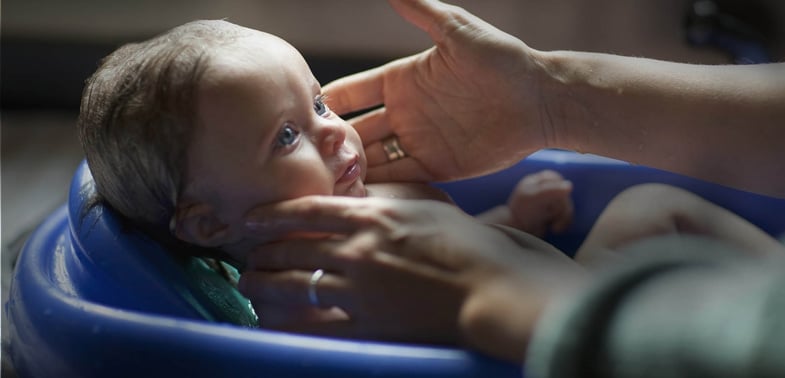
Between the bubbles, splashing, coos and giggles—bath time is a perfect moment in your day to engage your baby’s senses and nurture your bond. Follow our simple step-by-step guide to learn the basics or some new tips.
Baths can not only relax your baby, but they can also give you a chance to bond and play after a hectic day. And like baby massage, a warm bath can be an excellent way to help prepare your baby for bed.
Water Isn’t Enough for Your Baby’s Bath
Water as a cleanser doesn't remove the fat-soluble impurities left behind under diapers and clothes, and if they remain, they can cause the delicate skin barrier* to break down. And water alone can actually dry your baby’s skin. Repeated use of water only, especially when hard or chlorinated, has been shown to cause moisture loss from the skin cells, which can leave baby skin irritated or red.
A gentle baby-specific cleanser like JOHNSON’S® baby TOP-TO-TOE® wash is recommended to help cleanse effectively.
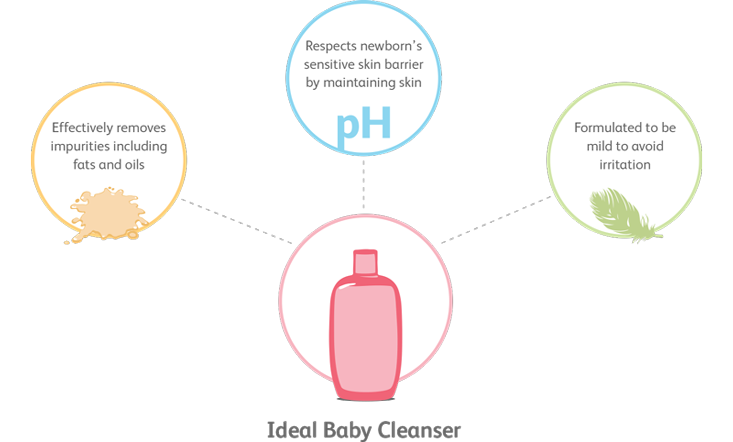
Bathing Your Newborn
Most healthcare professionals recommend bathing newborns 2 or 3 times per week, increasing the frequency as your baby gets older. Even though you may not give your baby a bath every day, a sponge bath is an alternative many moms choose for their very young babies.
Learn how to give your baby a sponge bath
How to Bathe Your Baby
The kitchen sink can be a great place to bathe your baby (with the tap turned away and soft towels or a foam insert on the bottom) or you could use a small plastic baby bath placed in the full size bath to make it easier to hold your baby.
- 1.
Start with only a few inches of warm water. Your baby’s bath water should be between 32 and 38 degrees Celcius. After filling the basin or tub, be sure to swirl the water with your hands so there are no hot spots.
- 2.
Before you put your baby in the bath water, test the water’s temperature on the inside of your wrist to make sure it is not too hot. NOTE: Be sure that your home’s hot water heater is set no higher than 50 degrees Celcius to help protect against accidental scalding.
- 3.
Using one arm to gently support your baby's back, head and neck, gently place her in the baby bath. Continue to support her using one arm while bathing her with the other.
- 4.
Gently cleanse around your baby's eyes with a cotton pad dampened with clean, warm water. Use a new cotton pad for each eye and always wipe from the inside corner of the eye outward. Then, using a soft washcloth, wipe around your baby's mouth, nose and whole face, working from the middle outward. Wipe the creases in her neck and don't forget behind her ears!
- 5.
For younger babies, wet a baby washcloth with warm water and use a gentle cleanser formulated for babies, like JOHNSON'S® TOP-TO-TOE® baby wash. If your baby has more hair, you might try a gentle shampoo, like JOHNSON'S® baby shampoo. Don’t be afraid to gently wash the soft spots (called fontanels) on your baby's head.
- 6.
Wash the diaper area last. For a baby girl, cleanse the genital area washing from front to back. For boys, gently wash the penis and genital area, also washing from front to back, and dry thoroughly. For an uncircumcised boy, avoid pulling back the foreskin.
- 7.
Let your baby take a few moments in the bath to enjoy the warm water. Pour cupfuls of water over her body to keep her warm. Be mindful of running water directly from the tap as water temperature can sometimes change suddenly.
- 8.
Wrap both hands around your baby's chest under her arms, support her head, and lift her out of the bath and quickly wrap her in a towel.
- 9.
Dry your baby well in all the creases, as excessive moisture could lead to skin irritation. Pat her skin dry to avoid skin damage.
- 10.
Before dressing your baby, apply a gentle baby moisturizer, such as hypoallergenic JOHNSON'S® baby lotion which is clinically proven to be gentle and mild.
Baby Bathing Tips
- Clean only what you can see; avoid putting anything deep into your baby's ear canal or nose
- Every baby is different, but some don’t like to be bathed too soon after feeding. Many moms find it’s best to bathe baby before she eats
- And remember, NEVER leave baby alone in the bath
A bath is a perfect way to create separation between "busy time" and "sleep time", while giving you the chance to bond with your baby. Even tough days can feel a little easier when you end the night by wrapping your beautiful clean baby, snug and cozy, in her blanket — just in time for a lullaby.
*The skin barrier is the upper layer of the skin that acts as a vital barrier to outside irritants, bacteria and allergens, helping protect the body from disease. Babies' skin barrier is uniquely different from adults’ and is still developing, so it needs special care.
What’s True? What’s Myth? Baby Bath Time with Elle Walker
Elle Walker explains that there is actually no harm in bathing your baby every day
Baby bath seats have recently undergone changes to align with stricter safety standards — but they are still controversial. BabyCenter® shares what to look for if you purchase one.
Moms around the world trust JOHNSON’S® to care for their babies
We are committed to working with moms, healthcare experts and scientists to ensure our products continue achieving the highest standards in safety, quality and care.


